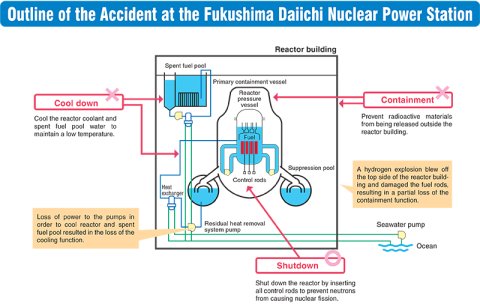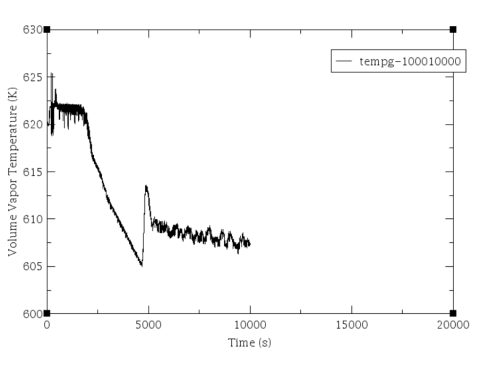The objective of this senior design project is reviewing the case of the Fukushima-Daiichi nuclear power plant accident through online resources such as news, official websites and published accident reports. By examining the structure of the power plant, the detailed accident impact on it as well as failed system components, any causes and preventative measures will be determined. In order to prevent similar incidents like Fukushima from happening in the future, possible solutions will be proposed including placing additional safety components and improving certain plant’s architectural structure to be more robust, preventing failure of the safety components. The ultimate goal of this design project is to design a more mature and passive reactor safety system that is able to help the future generations of commercial reactors to mitigate any similar circumstances such as natural disasters and extended flooding like what occurred in the Fukushima accident.
Team: Jiayi Liu, Christopher Holler, Evan Vengen, Spencer Knowles
Project Advisor: Dr. Hyun Gook Kang

Members of the design group
Project Motivation
Reactor safety is an important aspect in the nuclear power industry due to the huge impact an accident could bring to society (expensive cost of clean up, environmental pollution from radioactive material release, etc.) when a reactor fails. Following a disaster, public relations for the nuclear power industry greatly suffers. Improving designs for safety systems which aim to minimize the likelihood of accidents and providing understandable data to the public is one of the few ways to combat this. In addition, as current global energy demand keeps increasing along with global warming, the use of traditional fossil fuel energy is no longer a benefit for human beings. Being a relatively clean and efficient energy, nuclear power will play an indispensable role in the future. Therefore it is imperative for the future generation reactors to have safer designs in order to fulfill the growing energy needs and build better community relations.

Project Description
The objective of this senior design project is reviewing the case of the Fukushima-Daiichi nuclear power plant accident through online resources such as news, official websites and published accident reports. By examining the structure of the power plant, the detailed accident impact on it as well as failed system components, any causes and preventative measures will be determined. In order to prevent similar incidents like Fukushima from happening in the future, possible solutions will be proposed including placing additional safety components and improving certain plant’s architectural structure to be more robust, preventing failure of the safety components. The ultimate goal of this design project is to design a more mature and passive reactor safety system that is able to help the future generations of commercial reactors to mitigate any similar circumstances such as natural disasters and extended flooding like what occurred in the Fukushima accident.

Vapor volume temperature as a function of time
Results and Accomplishments
The proposed solution is a pressurized tank of water that is attached to the secondary input of the steam generator and regulated by a solenoid valve. This was implemented into the RELAP5 input file. The group is able to simulate scenarios similar to the accident that occurred in Fukushima using RELAP5 with a built-in Pressurized Water Reactor (PWR) model. The simulation fails around 35 minutes when the temperature exceeds what the simulation could process. This gives a maximum time limit for the battery bank to keep the solenoid valve closed. We then ran multiple simulations at different mass flow rates (kg/s) to see which would prolong the core meltdown or prevent meltdown altogether. Considering that we needed an optimal tank size, the best mass flow rate we found is 22.1kg/s. Knowing the mass flow rate and the duration we want this system to be in effect for, we can find out how much water is needed. For a time duration of 2 hours, the tank would have to be able to hold 45,000 gallons of water (this includes extra water). The tank would be pressurized to be able to enter the secondary side of the steam generator. From these simulations, it shows that the PWR meltdown can be mitigated during a station blackout by continually cooling the steam generators. In addition, using the AIMS event tree software the group is able to prove the decrease in accident probability in the PWR with the proposed safety system.